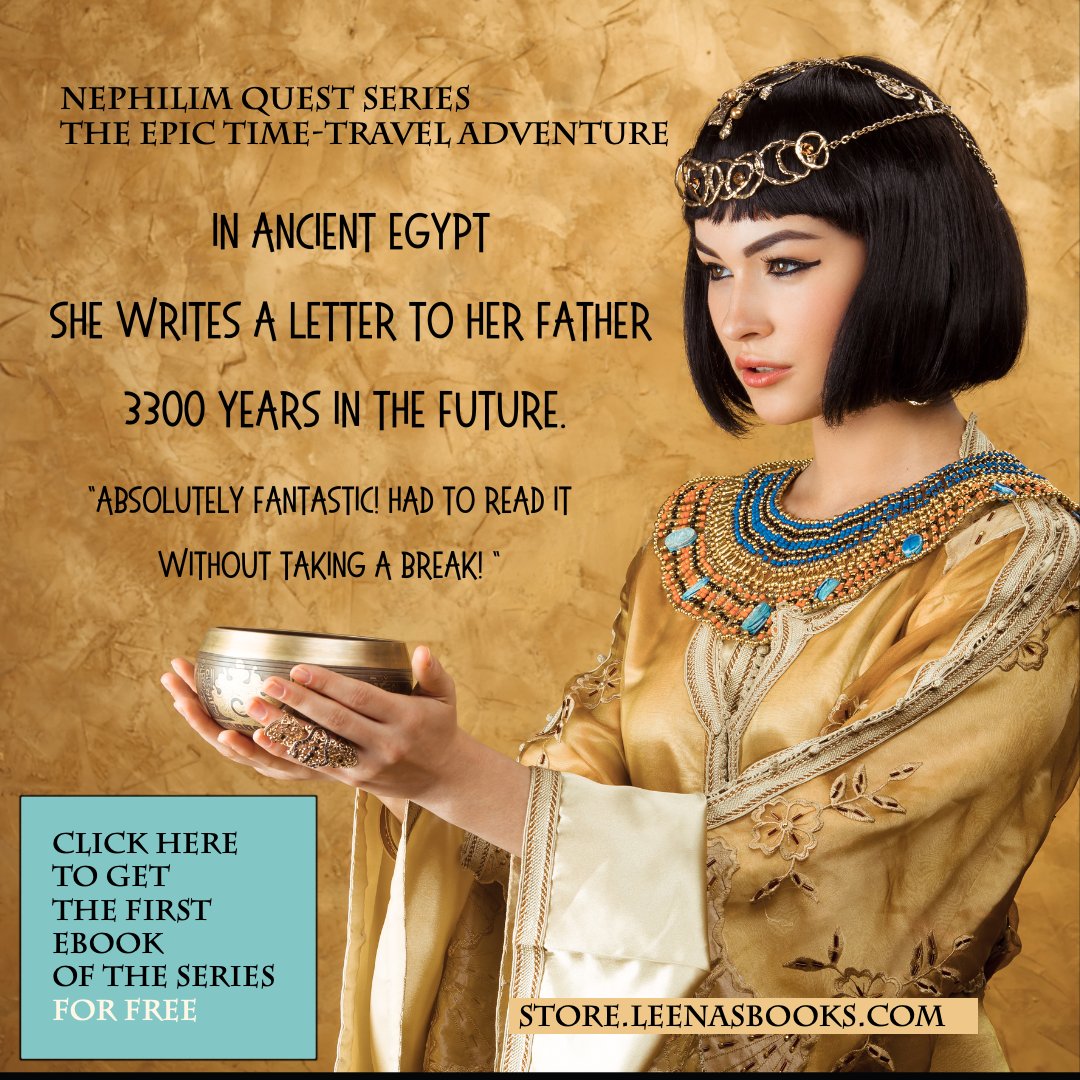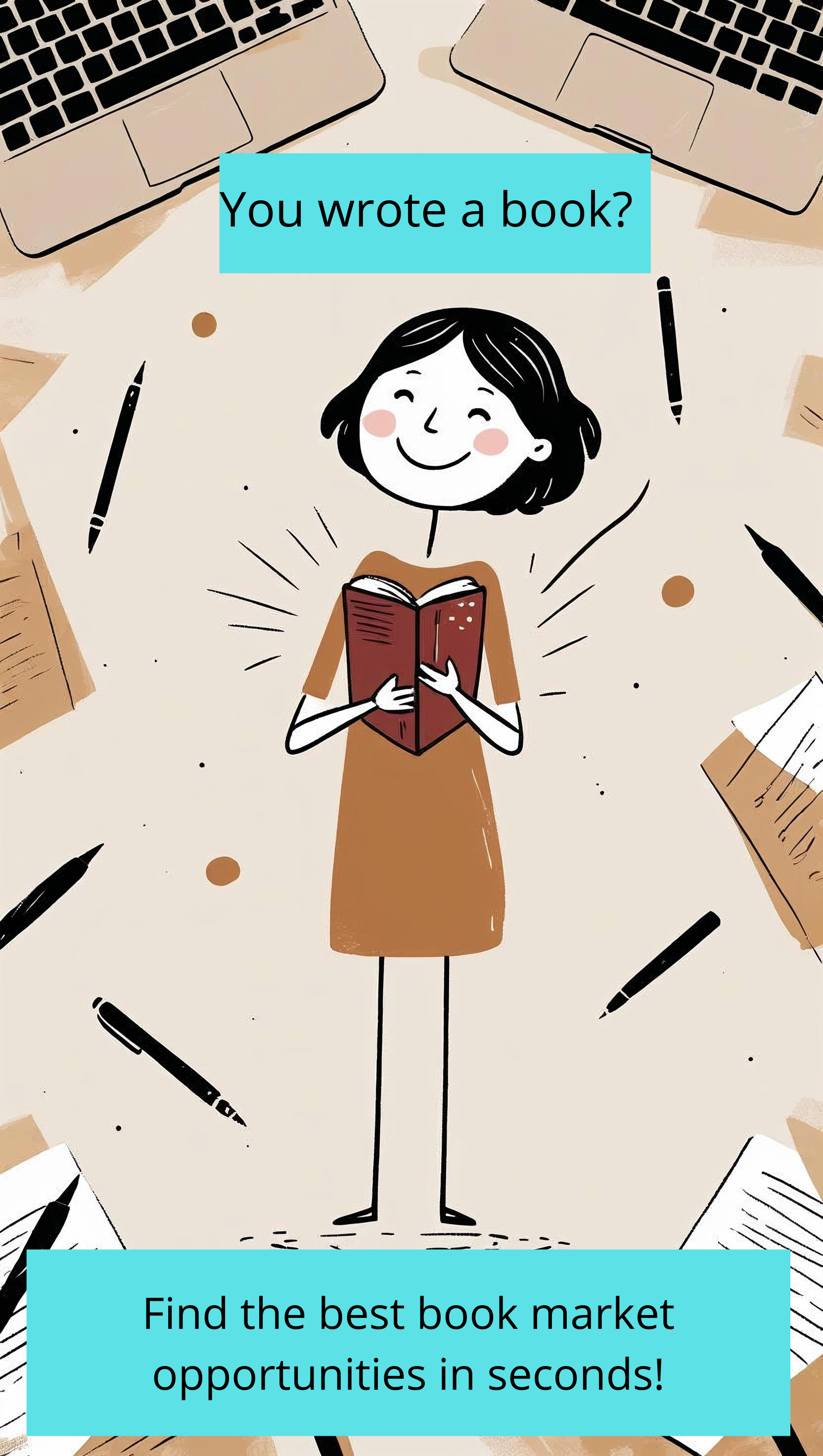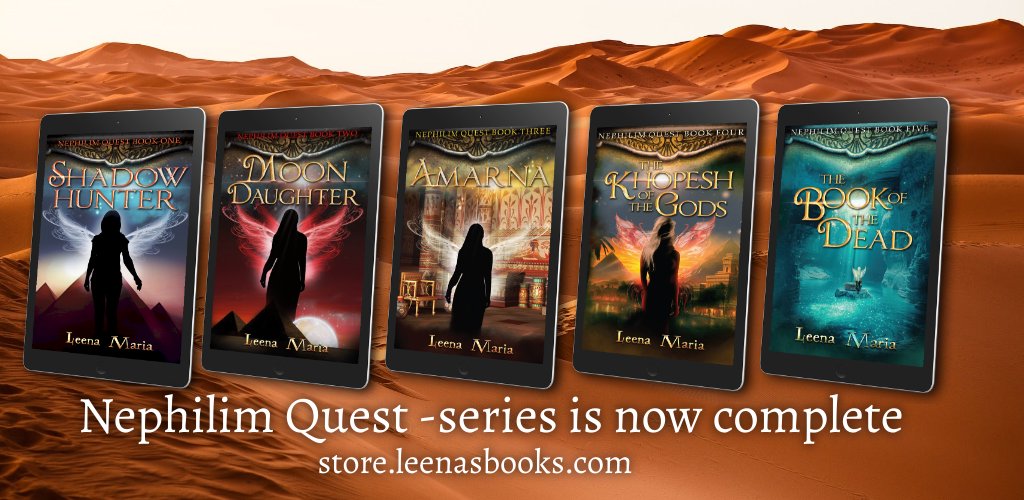Click on the pictureS to get the Nephilim Quest books with a discounted price
|
INTERVIEW WITH
|
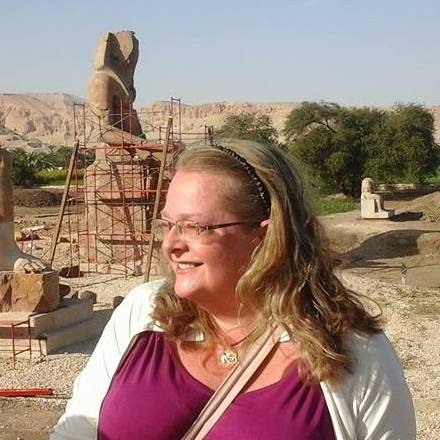 |
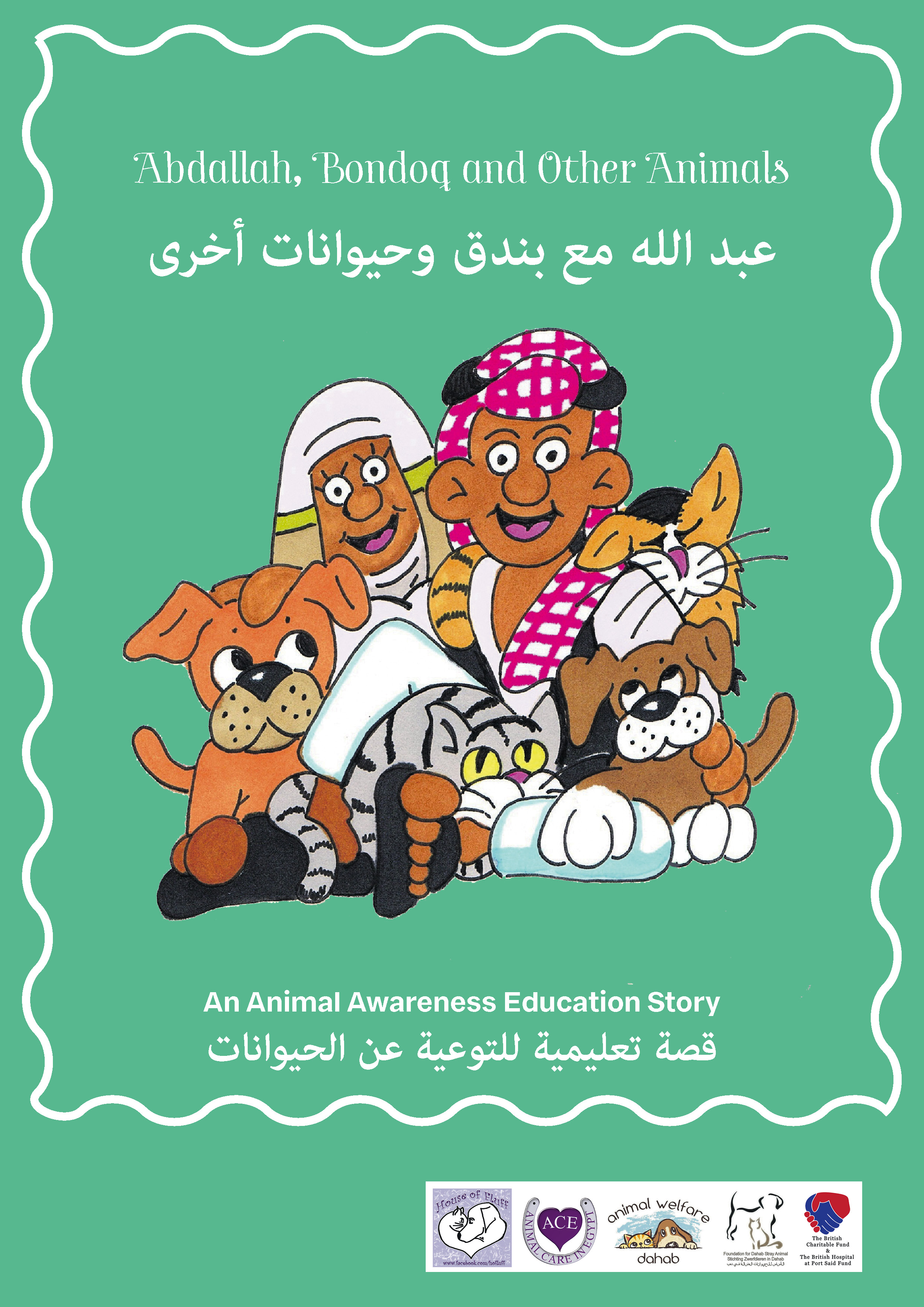 |
The long answer is a bit more complex and personal. It has to do with how I first came to live in Egypt, and then later involved in animal rescue. You see, growing up, I never had any pets except guppies – not very huggable. I was bitten by a German Shepherd when I was 5 and remained frightened of dogs after that, I was thrown off a horse at 10 and am still a bit daunted by their size to this day, and I’m allergic to cats. So I can also understand people who are not born animal lovers or afraid. I was a very cerebral kid and adult, into reading (voraciously), music and dance more than animals and the outdoors. I fell deeply in love with Ancient Egypt when I was ten years old, and I was/am fascinated with ancient history, performing arts, myths and metaphysics, fantasy novels (high, urban, historical; favourite author Mercedes Lackey), learning and self-development. I’ve always been passionate about (self-)education in general. I studied international law and was a real career girl, branching out from legal and policy work into project-management and consulting, while all my other passions were still pursued but relegated to the hobby area. I was also first Senior Executive Editor of The Leiden Journal of International Law and then Vice-Editor-in-Chief, all in my spare time. At around 32, it became clear that I had contracted a serious chronic illness and had also worked myself into a burnout. As a result, I got disabled out of work. Faced with what seemed to be a ruined life and the ‘interesting’ decision of what to do with the rest of it, I took a leap of faith. Instead of waiting until retirement to move to Egypt, I packed up and went to live in my heart home Luxor. I had some very good years there, travelling the length and breadth of Egypt to all the sites I had dreamed and read about for so many years. But my life was still all about temples, history and metaphysics, not animals. |
|
Then, a little under 10 years ago, I met my now ex in the stunning Western Desert Oasis of Dakhla. Ahmed was a dedicated animal lover and rescuer. He helped me get over my fear of dogs – or rather, his two amazing dogs Rocky and Pouchy did. Rocky is a small white fluffy Maltese terrier, rescued from Alexandria Zoo where he was dumped, and Pouchy was the most gentle, stunning and noble dog I have ever met, half ‘balady’ (local) and half desert wolf. His mother was killed in a roadside accident and he was then rescued and hand-reared by my ex. Pouchy unfortunately passed away a few years ago, but little Rocky is still with me (together with 20 other rescued cats and dogs in my House of Fluff) and is guesstimated to be between 15 and 19 years old now. I’m still somewhat allergic to cats, but prolonged exposure and daily antihistamines help. My ex turned out to have severe personal issues and in the end, these took over and our relationship turned into a nightmare that I had to rescue the animals and myself from. So with all the animals we had rescued by that time after living in Alexandria and Sharm (13 dogs and 30 cats), I ran away to the small town of Dahab on the Red Sea coast of South Sinai, incidentally at exactly the same time that the first Egyptian revolution was taking place in Cairo’s Tahrir Square, far away. Dahab is a magical and very unique place, and even though it did not have any Ancient Egyptian temples to captivate me, it was an amazing place full of community initiatives, a wealth of wellness activities, a wide variety of water sports, and numerous creative endeavours and arts. Dahab is where the book was born and most of its content made, and I honestly think that it is the only place in Egypt where this could have been done, with its unique blend of creative, forward thinking and community minded people. And there, my metamorphosis into an animal welfare person, with my own passions of education, wellness and arts thrown in, became complete. |
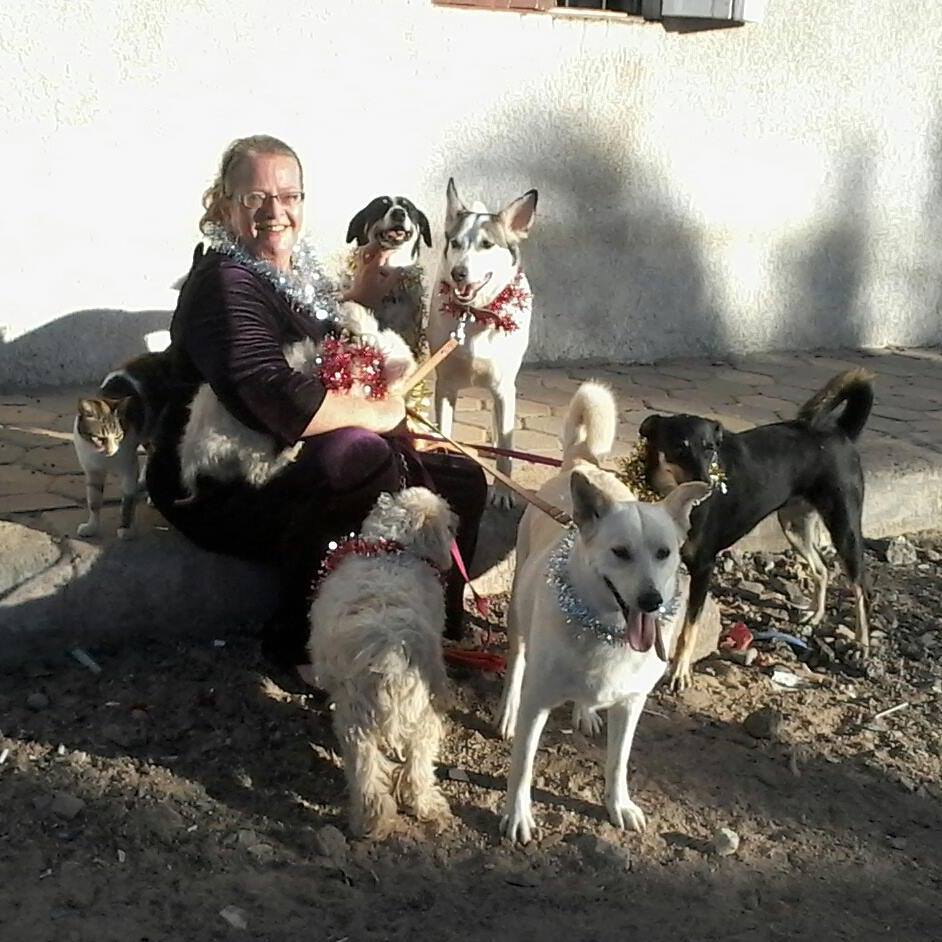 |
2. What is the general attitude towards animals in Egypt? Do people keep pets or are the animals kept only for productive purposes?
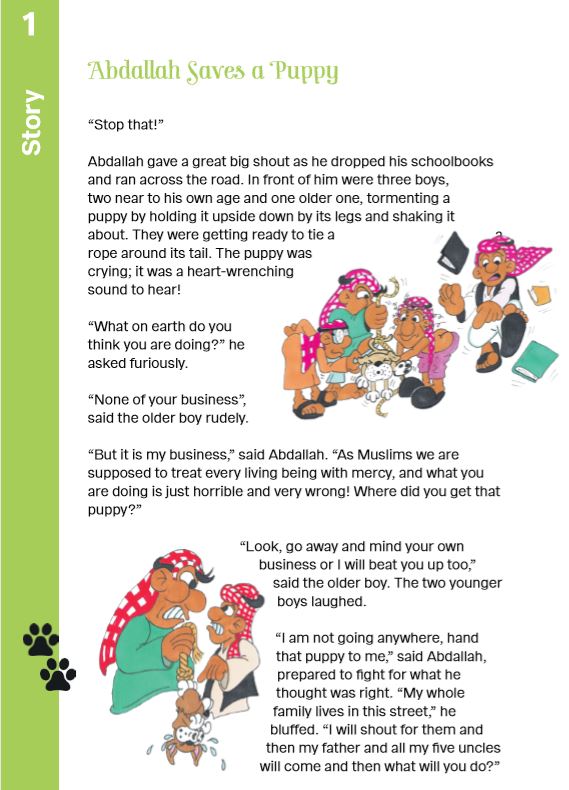 |
That depends on where you are. In the rural areas, animals need to be productive, pure and simple. So a dog is a guard and often tied up. Cats are treated a bit better but also need to catch vermin. Livestock (goats, sheep, cows, water buffalos) and working animals like donkeys and horses are the main focus of the majority of Egypt when it comes to animals. But they are often overworked and treated harshly. Most people are poor, and do not have the resources to pamper themselves, let alone animals. It can be a hard life for all concerned. And let’s face it, pets are a luxury. Kindness and mercy, however, are not, and they are very important values in Islam, so I have stressed such things in the book as well. In the cities and in areas touched by tourism, there is a new trend now that people are starting to keep pets, but unfortunately those are often bought more to show off, expensive breeds of cats and dogs (and often ones that do not belong in the hot climate of Egypt). Many are dumped on the streets when they become ‘bothersome’. There are also millions and millions of ‘balady’ street dogs and cats, who are looked down upon, often live in horrible circumstances and die in roadside accidents, or due to poisonings and shootings. There are only a few shelters (all shelters are non-governmental anyway and run by private, passionate people and foundations that depend on donations) and they are in the big cities. There are no comprehensive TNR (Trap-Neuter-Release) or educational programmes run by the government, again that is all done by private persons and charities. The Egyptian government has other issues to concern itself with, and animal welfare is unfortunately simply not seen as a priority. But having said all that, there IS a growing awareness, led from the front by some amazing young Egyptian rescuers (which is lots better than just foreigners coming in and telling people what to do and how to behave, even though the foreign perspective is also very important due to the tourism angle). Also, people are starting to see that a well-treated animal is more productive than an abused one. And let’s face it, animal cruelty is, unfortunately, still of all times and all nations. As a species, we humans are simply still not very nice to our animal brethren in general. |
3. Did you create the characters of the book based on a typical family in Egypt?
That’s actually rather hard to answer as the story evolved quite organically. I have lived here for a long time, and in quite a few different places, and yes, of course there are influences in the characters of everything I have seen and experienced here. But obviously I added some qualities that are not 100% typical because we wanted to show an example of treating animals that was a bit different from typical. Abdallah’s mother is, for instance, perhaps a bit more enlightened than most when it comes to how animals should be treated. Uncle Sayid is not your typical Egyptian uncle, but the story makes that clear. And of course Abdallah himself is pretty stellar kid for any culture.
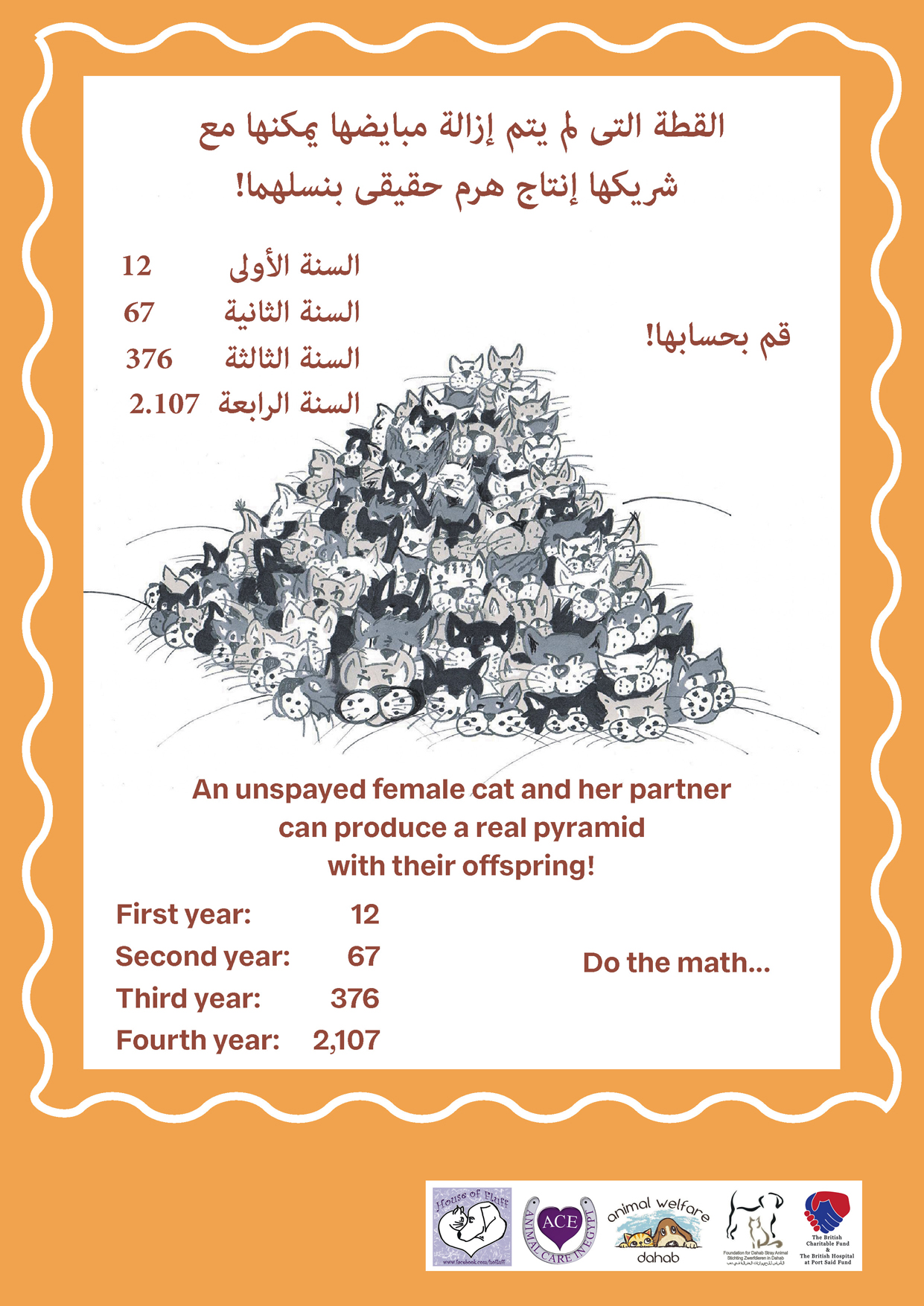 |
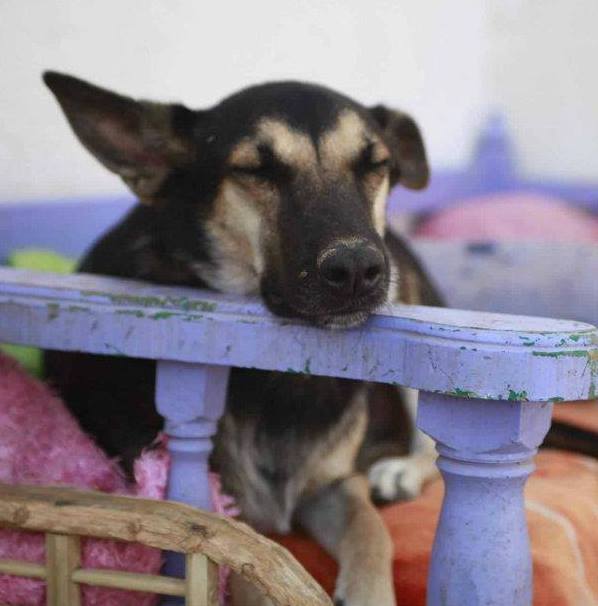 |
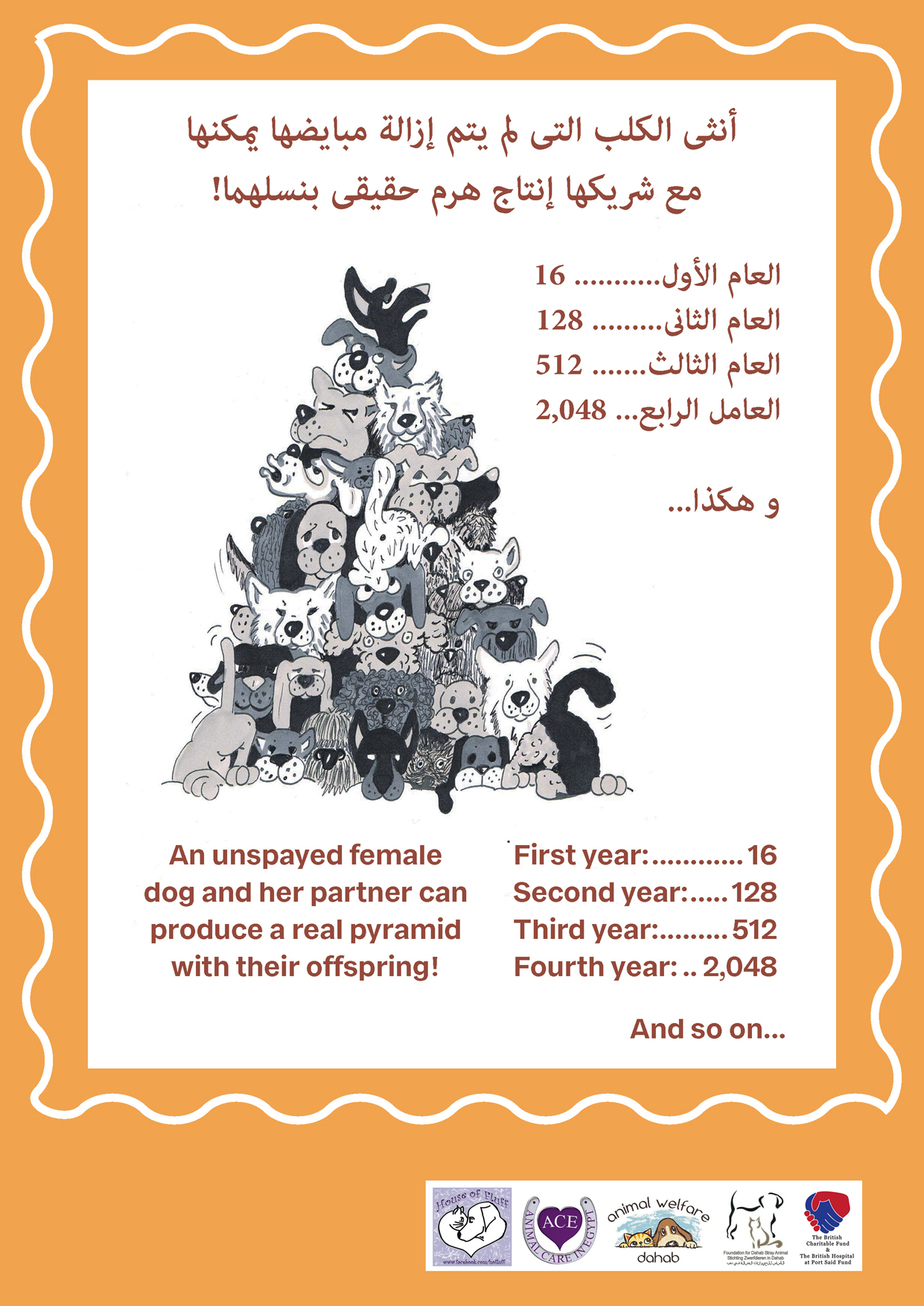 |
4. In your book there is the story itself and then animal information pages and hobby craft pages. What gave you the idea for the hobby craft pages?
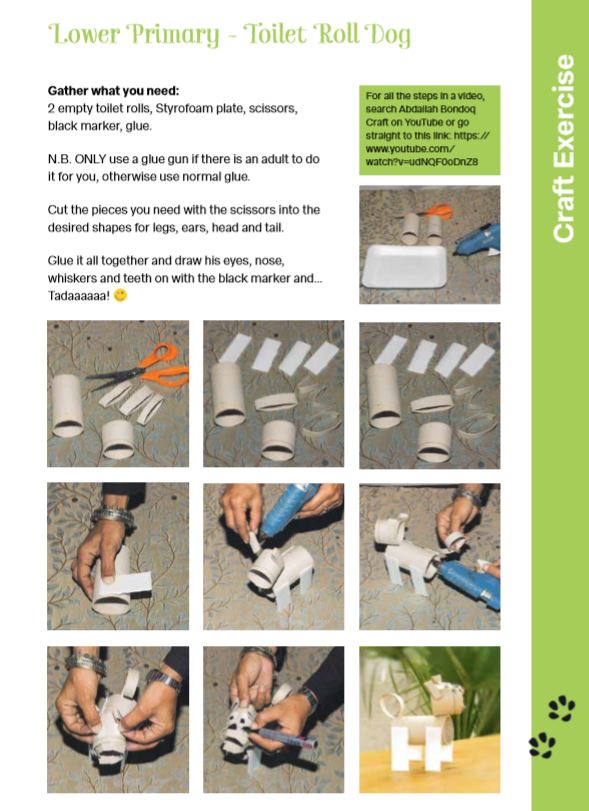 |
I wanted a thematic approach to cover the subjects that needed to be brought into the spotlight. But I wanted to do it in a way that engaged the kids, and made it fun, not just one-sided pumping of information. The fact boxes and some of the other exercises were inspired by the German booklet, but the craft exercises are a different story. I am quite active on Facebook (a lot of community and rescue work here goes through Facebook) and I often saw cool craft videos with animal themes. One of my best friends in Dahab, Sherihan el Gammal, is a very creative lady and a dedicated recycler and animal lover. So I approached her with the idea to do crafts with recycled materials – which would also make it easier and cheaper to source the materials for schools that don’t have a big budget. Sherry came up with two fun craft exercises for each chapter, one for the younger kids and one for the older kids. Our great friend and professional photographer Stephen De Bond then had a couple of sessions with Sherry to take pictures of the whole step by step process. The children can easily follow all the steps, there are YouTube videos as well. Then they can take their creations home and show them off. Always fun and a good reminder of the lesson. |
5. Is this a book that could be used in schools?
|
Yes, absolutely. It is actually designed that way. Each chapter forms one comprehensive lesson with a central theme and the story as the thread that binds all six chapters together. The idea is that schools can do an animal awareness project, either one full week, or one lesson per week for six weeks. There is a brief note in the back of the book explaining that for teachers. They can finish off with a competition and a charity drive to get the kids active in the outside world too. I have already had some very positive feedback on the setup and content of the book from people who are actually in the field of teaching and of publishing teaching books for children, with experience in the Middle East. Apparently, this kind of book is exactly on trend with current insights into teaching: story-driven, and interactive with creative activities. So I really hope we can get this book into many, many schools. 6. Tell me about your team that helped you create this book. Who illustrated it? Did you write the story all by yourself? Who made the hobby crafts in the pictures? I already explained about the crafts and photographs above, and the two wonderful people involved in those. Sherry also double-checked all content for Islamic correctness for me. One of our greatest treasures was Thomas Vom Holle, the illustrator. He actually lives in Germany, not Egypt, but he completely captured the spirit of the story. His illustrations make the book come alive in my opinion, and he was awesome during the whole process, so helpful and patient even when I had to ask for edits and more illustrations several times due to new needs based on layout etc. This has been a long project and he was committed, kind and generous throughout. Eveline Ibrahim helped me research the info for the fact boxes. I wrote the story and all the other texts that tie the individual pieces together; I sort of glued all the parts together if you will. The most amazing thing is that all these people gave of their time and skills for free, it was a true labour of love. We only paid for professional translation into Arabic and professional layout and printing. |
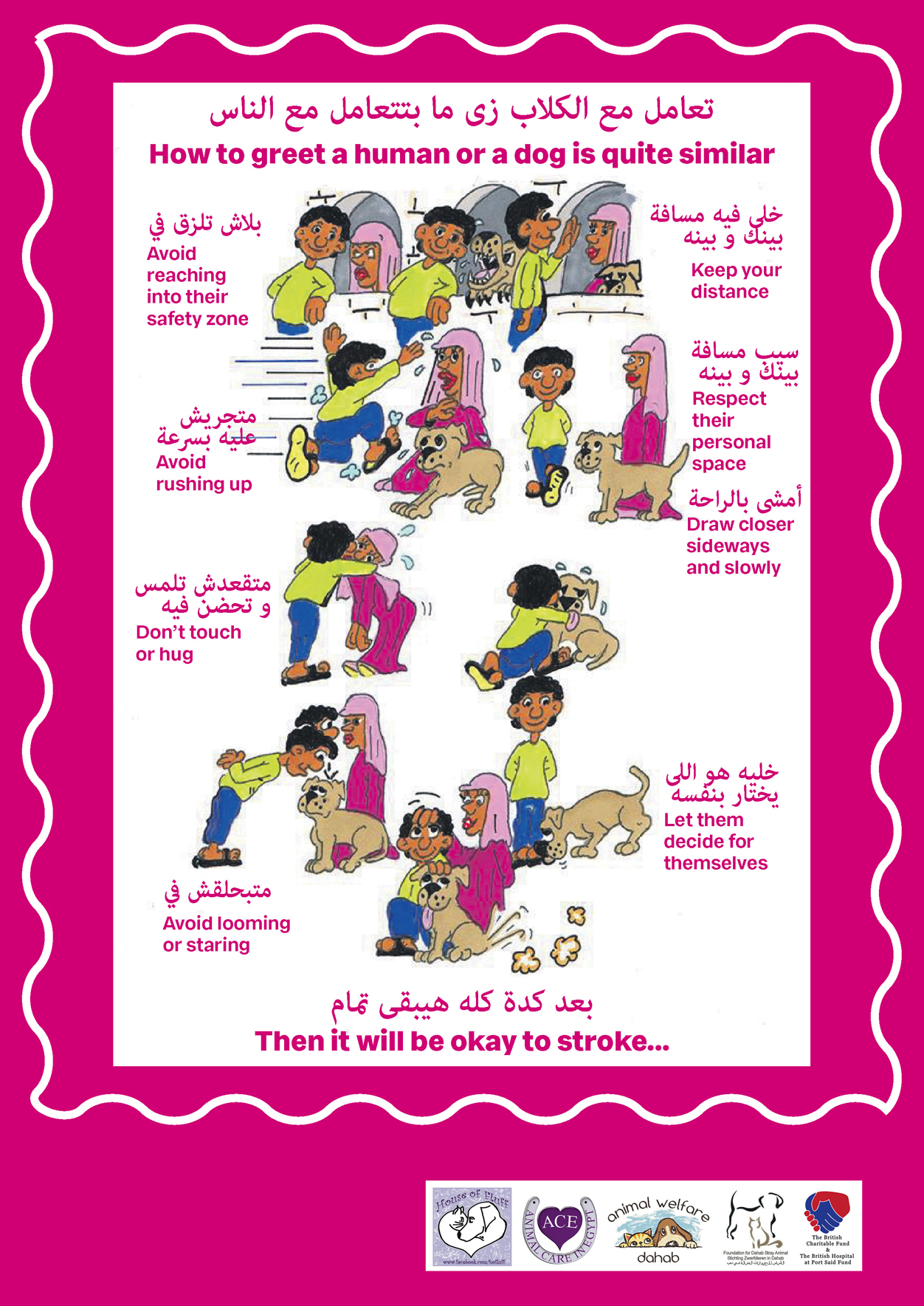 |
Almost all the creative content was made in Dahab, and I could not have gotten that done anywhere else. Dahab is a very special place. When I lived there, there were a lot of community activities in so many different fields: animal welfare, wellness, environment, arts, promotion of Dahab as a destination, etc, and I was active in many of them. We even had a children’s circus with kids of all nationalities (I did songs, clowns and make-up for that, so much fun). And so many just pitched in and helped, with TNR projects, with clean-ups, with markets and festivals, the circus, you name it. It was extremely inspiring. I’m not saying Dahab was perfect of course, there were ego clashes like everywhere else when people come together to do projects, but there was a real sense of ownership, especially when tourism declined after the revolution. People felt “This is our town and we need to make it shine”. It was full of creative spirit and so many gifted people.
|
But Dahab is also a place of hippies, dreamers and seekers, and I do believe we needed the more down to earth sense of the people at ACE here in Luxor to actually help get the book from material to print. Synergy, you know. When I moved back to Luxor, I showed the content to Kim Taylor, the manager and co-founder of Animal Care in Egypt – ACE (ACE is a fantastic hospital for (working) animals with amazing vets and staff, no place like it anywhere else in Egypt). She was very enthusiastic and wanted to include it in their educational programme. She set their fundraising manager, Helen Collins, to fundraising for layout and printing of the book. We had a very creative and gifted designer also through ACE, Ali Beckett, who turned the book into something very cool indeed. I did all the editing and proofing together with Ali. With the help of some very kind English-Arabic speakers, we made sure that we mirrored the content and layout exactly in both languages. And now, we have a real book, starting on one end in English, and on the other in Arabic, and made especially for children in Egypt and possibly the rest of the MENA region. It’s been a journey of many miles and years, and quite a few ups and downs, but if you believe in something and stick to it, and you have the support of great people with diverse qualities, you can make dreams happen. |
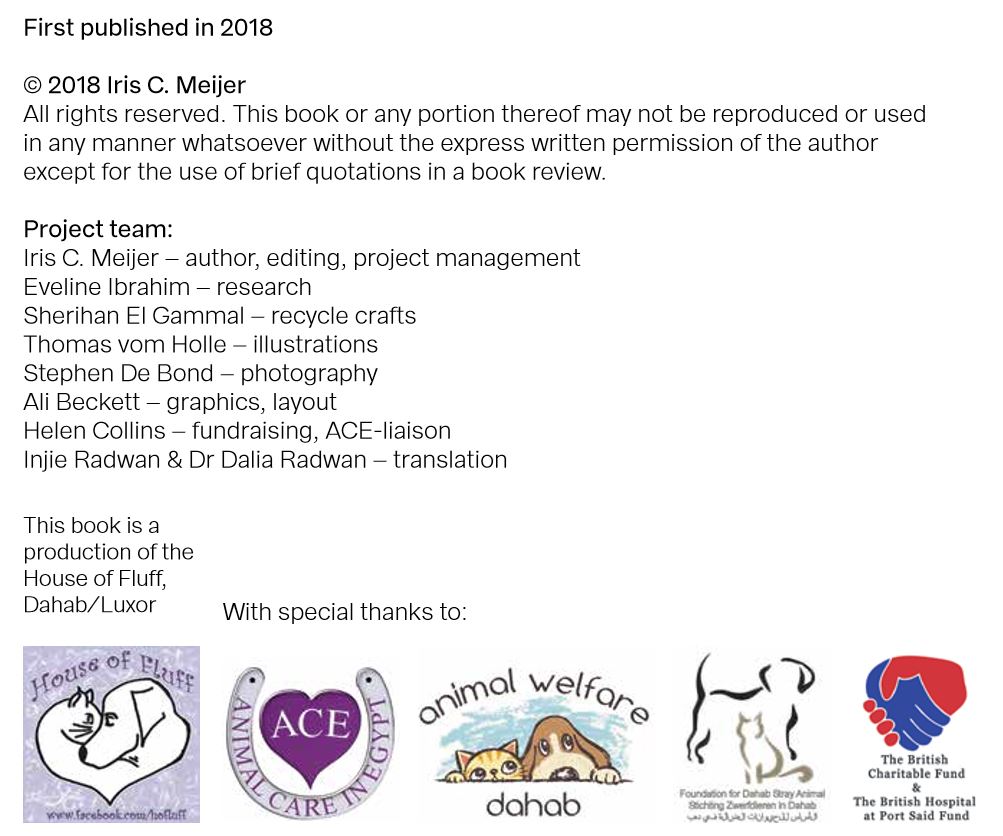 |
7. Where can people buy your book?
The book was never meant for commercial sale, it was always meant to be used in educational projects and given to the kids for free. That is why the fundraising was so very important. But fundraising for educational projects turned out to be more difficult than expected. As Helen told me, many funds preferred to give to projects with direct results like orphanages and hospitals, which of course gives more immediate satisfaction, not to mention better pictures and soundbites. Education needs a more long-term vision. So we are now exploring other options for publishing. We may indeed sell the book as well, so that the proceeds of book sales can be ploughed back into printing more books for pure educational projects. We are also considering selling through Amazon. But those plans are not finalised yet, so you’ll have to check back for that one. I think people can eventually buy a copy at ACE of our first print run, for a fixed amount or a donation. But at the end of the day, this was never a project meant to make money. It is, and always will be, about raising awareness, planting seeds and hopefully causing some paradigms about animals to shift – like my own did. Slowly but surely. Inshallah.
8. Do you have a website?
I’ve only just made a dedicated page for the book, so it is still a bit bare of content, but the House of Fluff and all the organisations who supported the project do have long-standing Facebook pages and some have websites.
9. Anything else you’d like to tell? Do you have other hobbies?
|
This book is very important to me on a personal level. I am a teacher at heart, of many things: self-development, Reiki and other forms of healing, theatre, project-management, and I love boring my friends to death about Ancient Egypt, which is the longest and most profound love affair of my life. I also make crystal jewellery. I believe education and taking off one’s blinkers are the only ways to develop and grow, in whatever field. I often think of a quote by one of my favourite authors in the field of self-development, Stephen R. Covey, in which he summed up the basic human needs in four L’s: “To live, to love, to learn, to leave a legacy.” If I am lucky, this book can be (part of) my legacy. I’ve certainly learned a lot making it! I have also been reflecting a lot recently about how beautiful things are often born from difficult circumstances or challenges – IF you can teach yourself to face such circumstances with awareness and seek out the hidden gifts in them. Like I explained above, I was never the proverbial animal lover or rescuer, I became that out of circumstance and necessity, but I have now embraced it 100%. The relationship that my association with animals came out of ended in a nightmare, but from that, a dream was born. I now have animals in my life, which I wouldn’t change for anything. They fill my heart to bursting every day, they make me laugh and are such a treasure. I have great new friends I would never even have met if all this hadn’t happened. I experienced something similar before, when I contracted chronic illness and my whole life fell apart – if that hadn’t happened, I would never have moved to Egypt in my thirties. I may have led a very weird life with quite a bit of pain and loss, and many, many shape-changes and transformations, but it’s never been dull. It’s been fascinating actually, and it still is. |
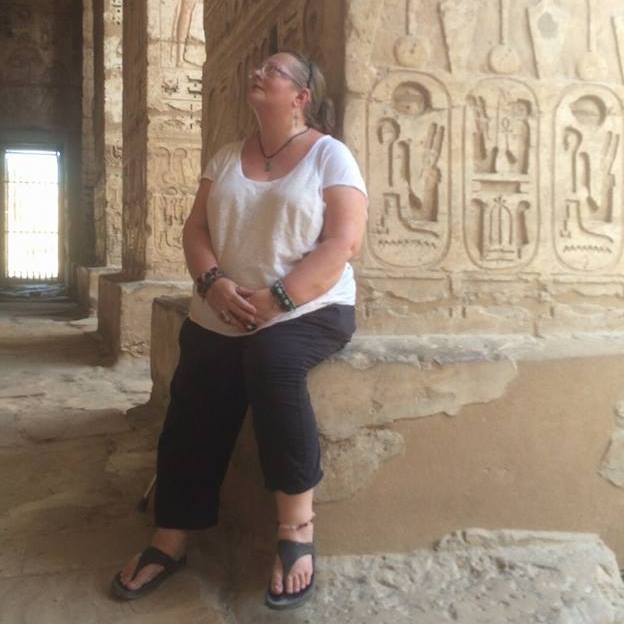 |
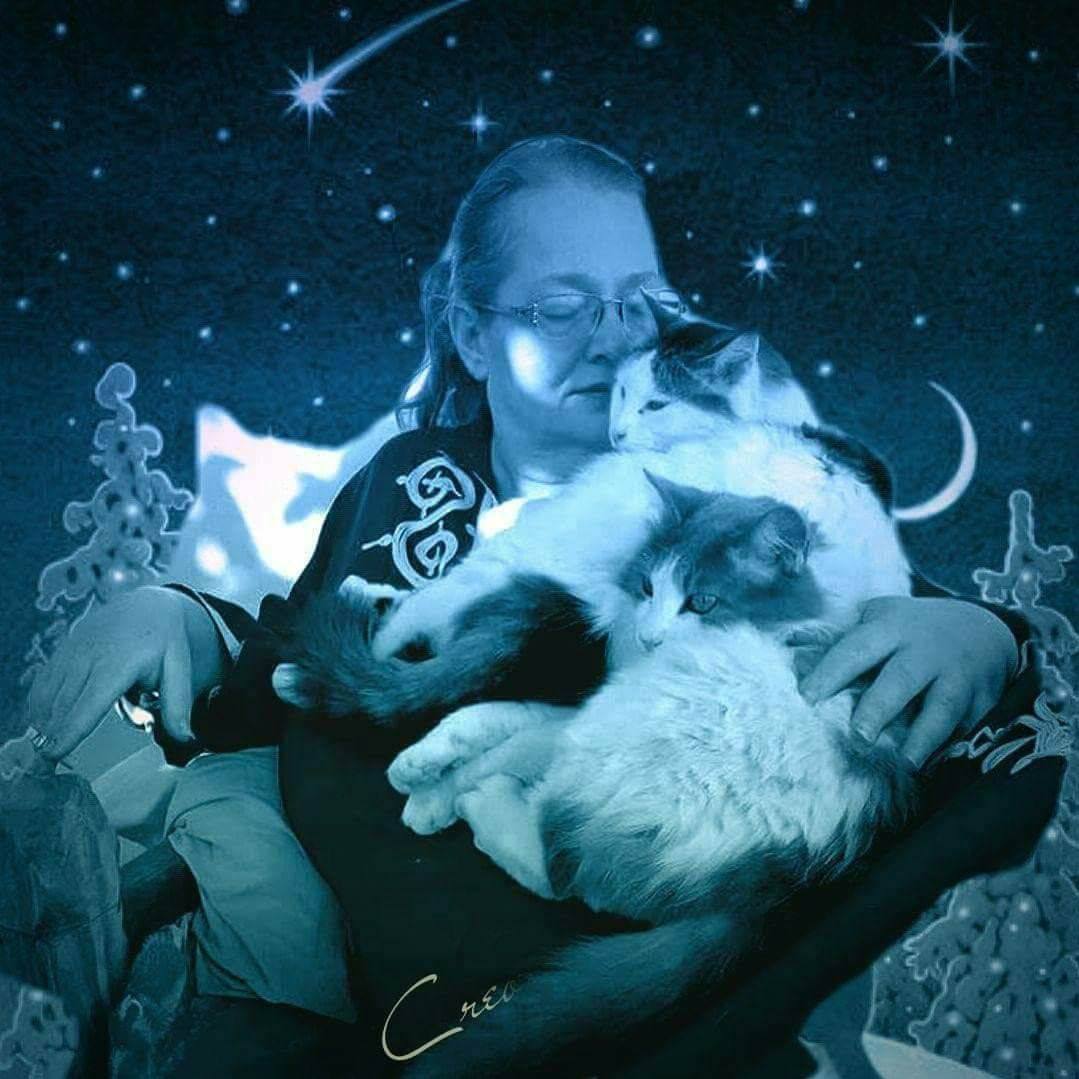 |
So I guess what I would I like to say in conclusion is that for everyone who feels that they are in a dark place with no way out, there is always a gift hidden in the darkness somewhere. A seed, a hint, an idea. Eventually, creation always comes from the void, the no-thingness, however uncomfortable it may feel while you are in the darkness. Another quote that I had read before and that a close friend of mine reminded me of recently because I am now facing new challenges with further loss of mobility and health: “When you are in a dark place, you tend to think you’ve been buried. Perhaps you’ve been planted. Bloom.” Bloom. For someone with a flower name, that is very appropriate. |
|
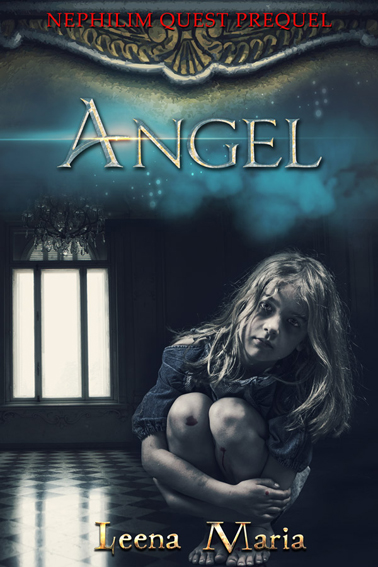 Upon subscribing you will get the Prequel to Nephilim Quest: Angel. Over two hundred years before Nephilim Quest 1 / Shadowhunter the roots of the story are planted. A little girl missing her mother, in the palace of the mightiest of the dark Nephilim, hoping for an escape ... This book is not for sale anywhere - only readers who have subscribed to my mailing list will get it. | |||||


